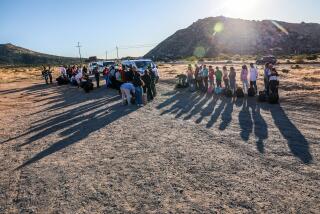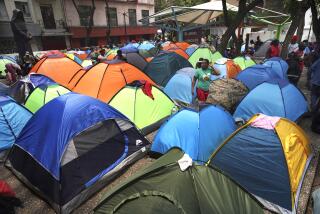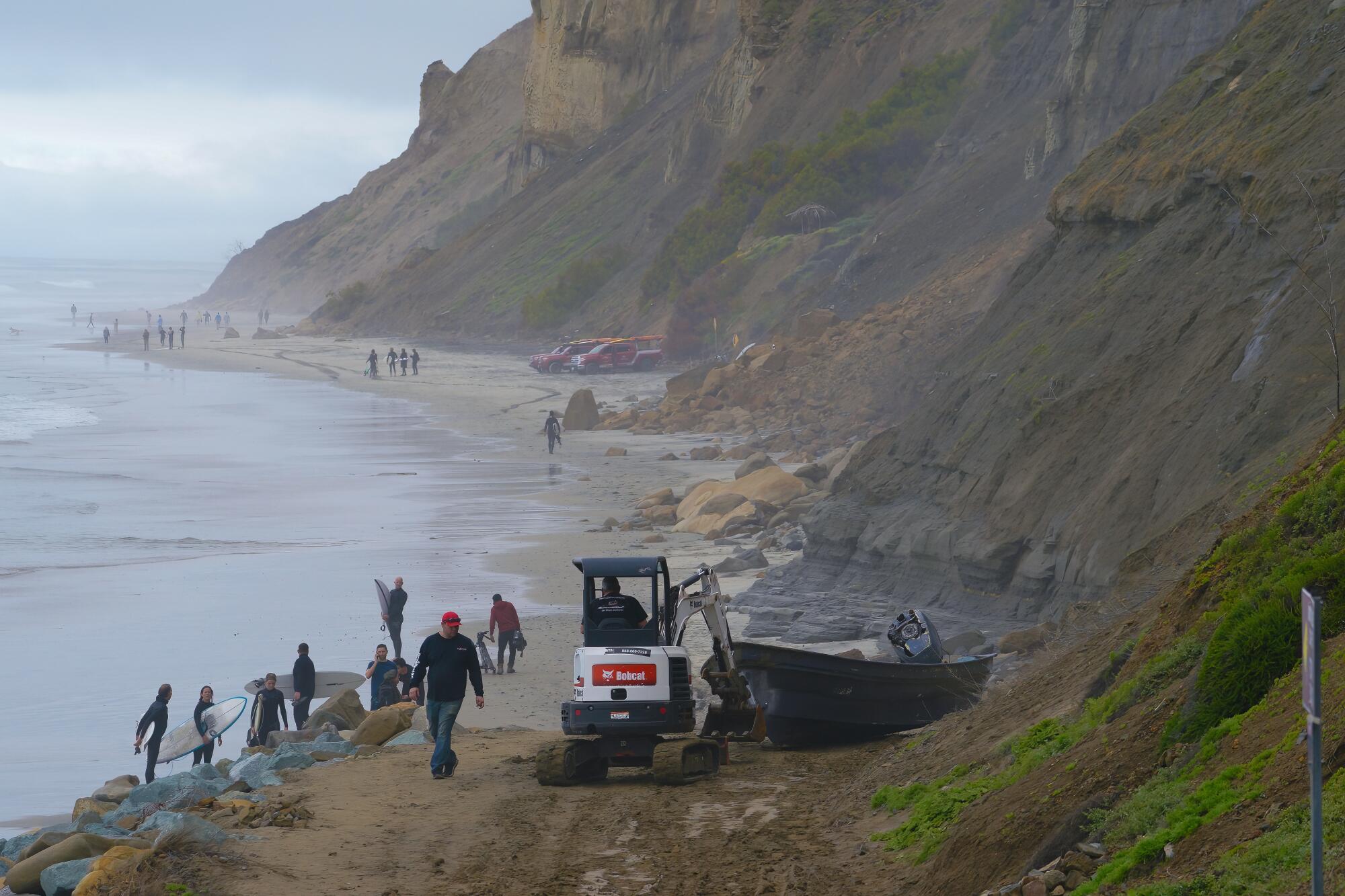
Families of Mexican migrants who died in boat crossing attempt at Black’s Beach learned of the tragedy through anonymous phone calls, humanitarian groups and social media.
San Diego — Before the sun rose last Sunday over foggy and rain-drenched Black’s Beach, news was beginning to spread of a terrible overnight accident. Eight migrants, who authorities later learned were all Mexican citizens, had died after crossing the border when their two small fishing boats capsized.
One San Diego-based human rights activist learned information about the deadly accident from a Facebook page based in Puebla, Mexico, where at least five of the victims were from. At least two families later received anonymous phone calls telling them a relative had been on a boat that overturned. The caller quickly hung up.
And so began a difficult process that unfolds each time a migrant dies while attempting to cross from Mexico into the United States, with authorities using official channels to try to identify victims and notify their families, and those same families often seeking information through more informal channels. Despite both sides ultimately trying to accomplish the same goal, it can take days or weeks for officials to finally contact a person’s closest relatives, or get the DNA or fingerprint proof needed to identify someone with certainty.
It’s an issue that has become more pronounced as an increasing number of migrants die trying to reach the U.S. According to figures released last month by the federal government, a record number of more than 890 migrants died along the border in the 2022 fiscal year that ended Sept. 30, up from 565 deaths the year prior. Many more remain missing.
“It’s frustrating to end up talking about numbers and statistics, because in the end, we’re talking about human life,” Carlos González Gutierrez, the consul general of Mexico in San Diego, said Friday. “One is too many. It’s unacceptable for one Mexican immigrant to die trying to cross the border ... Behind every number is a human being, a family that loses their loved one.”
In the Black’s Beach disaster, the San Diego County Medical Examiner’s Office had released the names of only half the victims as of Friday. For the others, officials were either still trying to reach next of kin or to verify their identities with DNA or other proof.
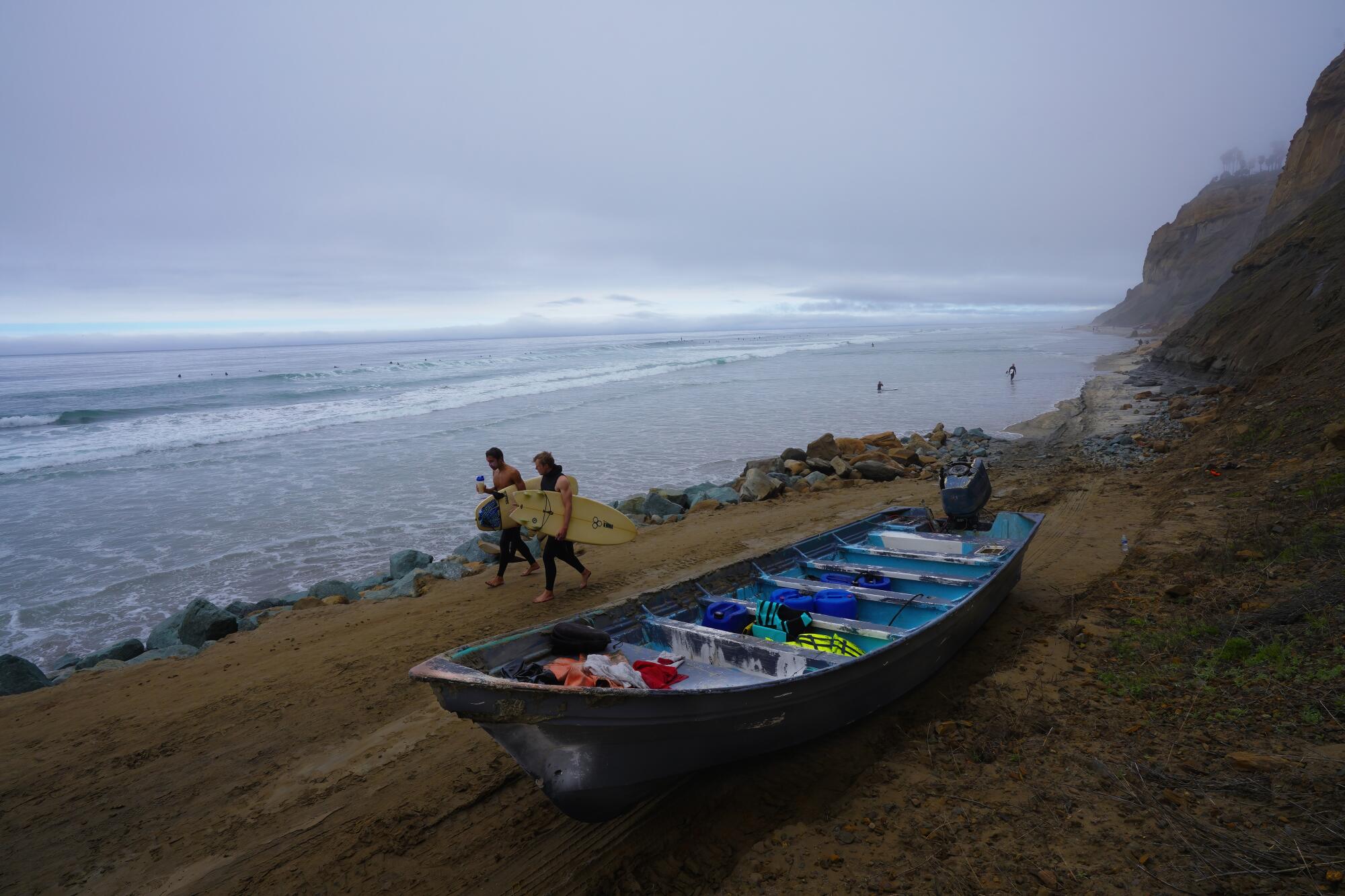
The dead included Yecenia Lazcano Soriano, a 22-year-old single mother of a 3-year-old girl; Alma Rosa Figueroa Gorgonio, 17; Guillermo Suarez Gonzalez, 23; and Eloy Hernandez Baltazar, 48.
González said Friday that at least five of the victims are from Puebla, a landlocked state southeast of Mexico City, and one is from Jalisco, on the country’s west coast. He said Figueroa was the youngest victim, while the oldest of the six whose identities were confirmed was 58.
Lazcano’s family members told Telemundo that she sent a video to them Saturday night. She was about to board one of the boats, and the footage showed rough ocean conditions.
Before midnight, she was dead.
Informal networks
That agony Lazcano’s family likely felt, when a loved one goes silent after beginning their crossing journey, is a pain shared by many of the families whose relatives go missing along the border.
The next brutal morsel of information came when the anonymous caller phoned one of Lazcano’s relatives. A family member had been on a boat that overturned, the caller said. The caller then hung up.
The relative tried to call back, desperate for more information, but there was no answer, according to William Murillo, a New-York based legal consultant who assists migrants.
Murillo said it is common for smugglers to deliver terrible news, then “vanish” so they aren’t contacted again, leaving panicked or grieving families on their own to search for information.
Most turn to the internet, particularly Facebook. On Monday, his firm published a video on Facebook with the basic details about the Black’s Beach deaths.
“If you have a relative who was going to cross that border and you are unable to communicate with them, call us to help you search,” read the post, which included a phone number.
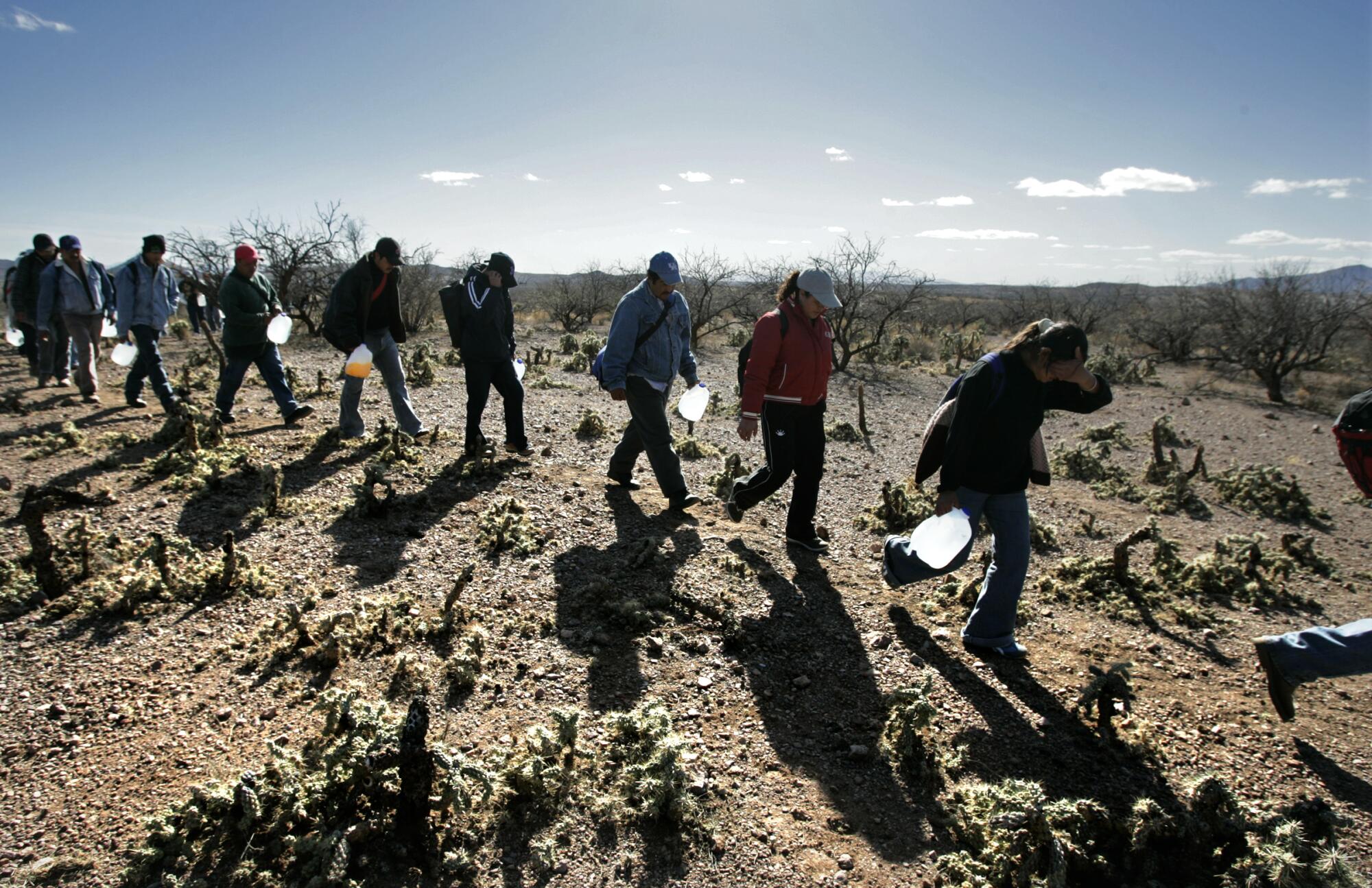
Within 24 hours, Lazcano’s family and one other contacted the firm, 1800Migrante.com, saying they believed their loved ones had been on the boats and they had not heard from them, Murillo said. By Tuesday, the firm had published a new video displaying the names and photographs of those two people and asking anyone who knew their whereabouts to call. Later that day, the Medical Examiner’s Office confirmed Lazcano’s identity.
Murillo, who founded 1800Migrante.com with his wife, was once the head of Ecuador’s federal government agency overseeing migrants. Murillo said his firm published the first video in case any of the Black’s Beach victims happened to be from Ecuador. But Murillo, who is not a licensed attorney himself, said the firm helps people from other countries as well, sometimes through their pro-bono program.
“That’s how we get in contact — they get in touch with us asking for help, to see if we can get some information,” Murillo said, adding that the firm has previously been able to help families find missing loved ones in the U.S. and Mexico.
Murillo said part of his firm’s goal by publicizing information quickly and broadly is to put pressure on government agencies to be forthcoming with details.
Pedro Rios, a human rights advocate and the director of the American Friends Service Committee’s U.S. Mexico/Border Program, said he learned details about the Black’s Beach accident through the Puebla-based Facebook page, which had early details about the victims being from there.
Information also travels word of mouth among community members, Rios said. In 2021, a person in Fresno looking for a missing migrant relative contacted a mutual friend, who put that person in touch with Rios, who was able to put them in contact with the Mexican consulate.
Aguilas del Desierto, a humanitarian aid group, is part of that long-established informal network, often fielding calls from family members whose loved ones are believed to be lost or abandoned in the mountains or desert along the California and Arizona border. Sometimes the migrants call themselves, and the group facilitates their rescues by the Border Patrol.
However, the group’s work oftentimes revolves around recovering the remains of the dead.
The group has never received a call from someone lost or in distress at sea, according to Vicente Rodriguez, a board member from the group, which translates to Eagles of the Desert.
No maritime aid
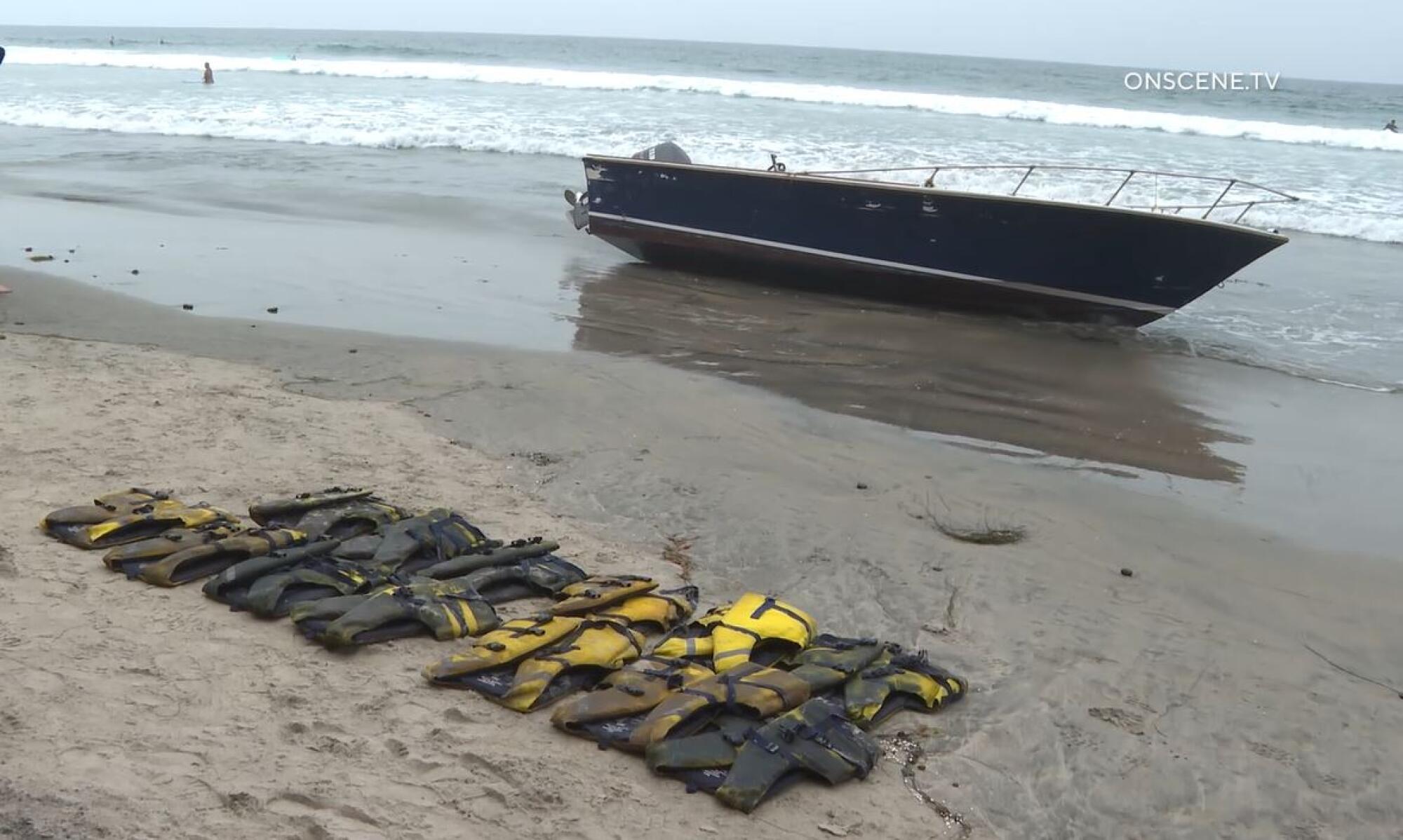
While maritime smuggling attempts in the Tijuana-San Diego region have surged in recent years, such crossings still represent a relatively low number of overall border-crossing attempts.
That’s part of the reason why there is no humanitarian aid available at sea from groups such as Aguilas del Desierto, or groups who leave water and supplies along desert and mountain migrant routes.
“There aren’t any other civil society organizations that I am aware of that specifically dedicate their services to victims of maritime incidents,” Rios said. “We don’t see that type of support in the same way that we see them occur off the coast of Italy, Greece or Spain.”
A spokesperson for the Los Angeles-based Coalition for Humane Immigrant Rights said “there are no formal networks or organizations that support migrants deciding to cross over via the sea.”
Maritime crossings also pose serious legal questions — where is the line between helping a boat full of migrants in need and becoming a part of the smuggling operation? And communication adds to the complications, as most smuggling boats travel out of range of cellphone towers and without sophisticated radios or satellite phones.
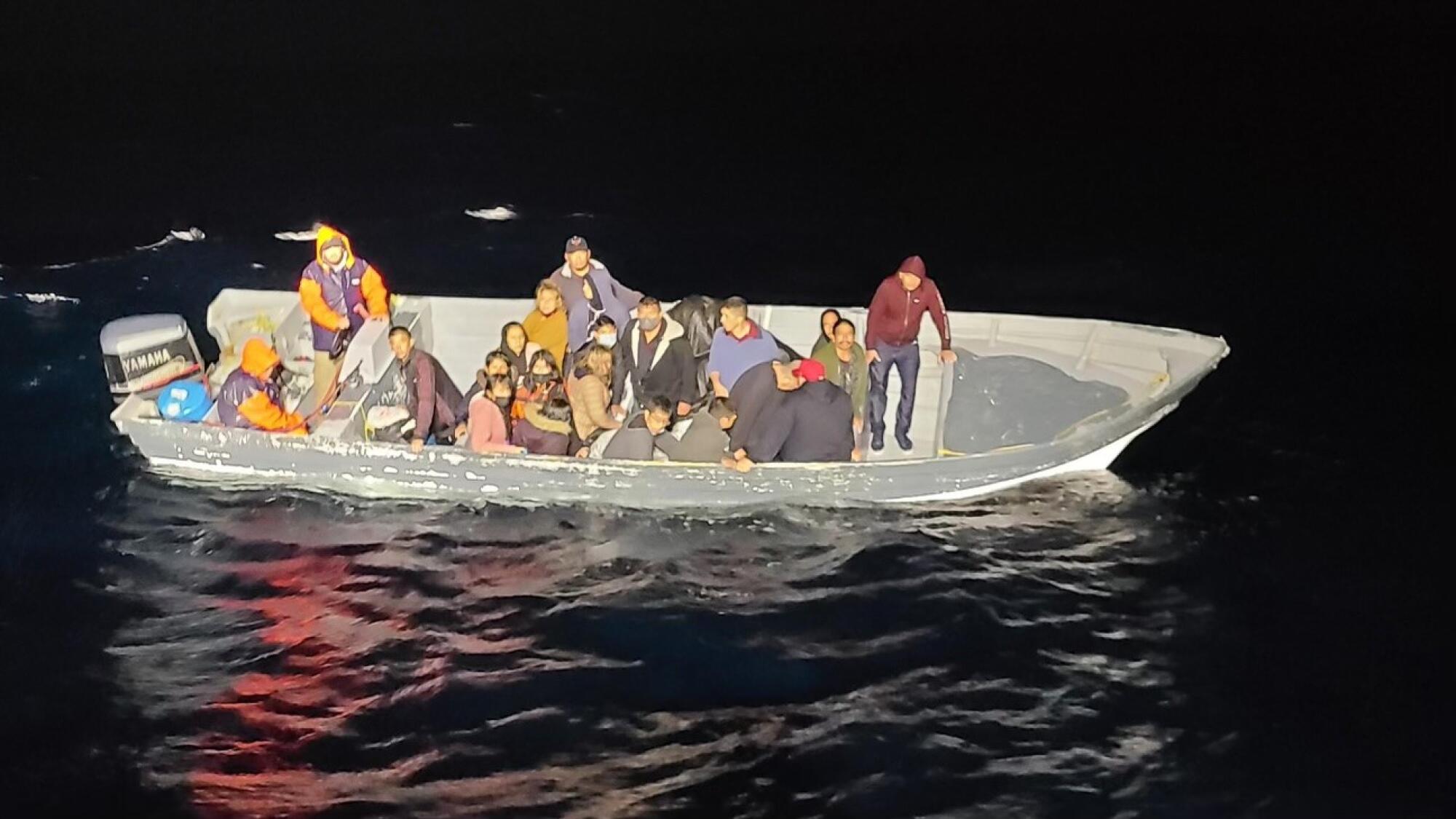
That means when smuggling boats don’t successfully reach shore or are not intercepted by federal authorities, they’re on their own if and when they run into trouble. That was the case last Saturday night, when a woman speaking Spanish called 911 and reported that her panga had made it to shore, but another had capsized.
By the time emergency crews reached the bottom of the Black’s Beach bluffs, there was no one left to rescue. Victims were discovered in the water and washed up on the sand. Rescuers did not encounter the 911 caller and did not know the whereabouts of others who’d presumably been on the boats, though no additional victims have been found.
Official efforts
Most of the victims had some form of identification on them, which offered a starting point — a “clue,” Chief Medical Examiner Steven Campman said.
The next step was to confirm their identities. The Medical Examiner’s Office tries to do so with fingerprints, dental records or DNA, Campman said. There are times when the office might confirm an identification based on the totality of various factors, but “that’s not our preference,” Campman said.
In most cases for the Black’s Beach victims, medical examiner investigators took fingerprints and matched them to records from Mexico. The Consulate General of Mexico in San Diego helped obtain the records. González said the consulate has “very powerful” databases that officials can search to help obtain those records.
In one instance, the Medical Examiner’s Office used dental X-rays to confirm a victim’s identity. The consulate also helped obtain the X-rays from the family.
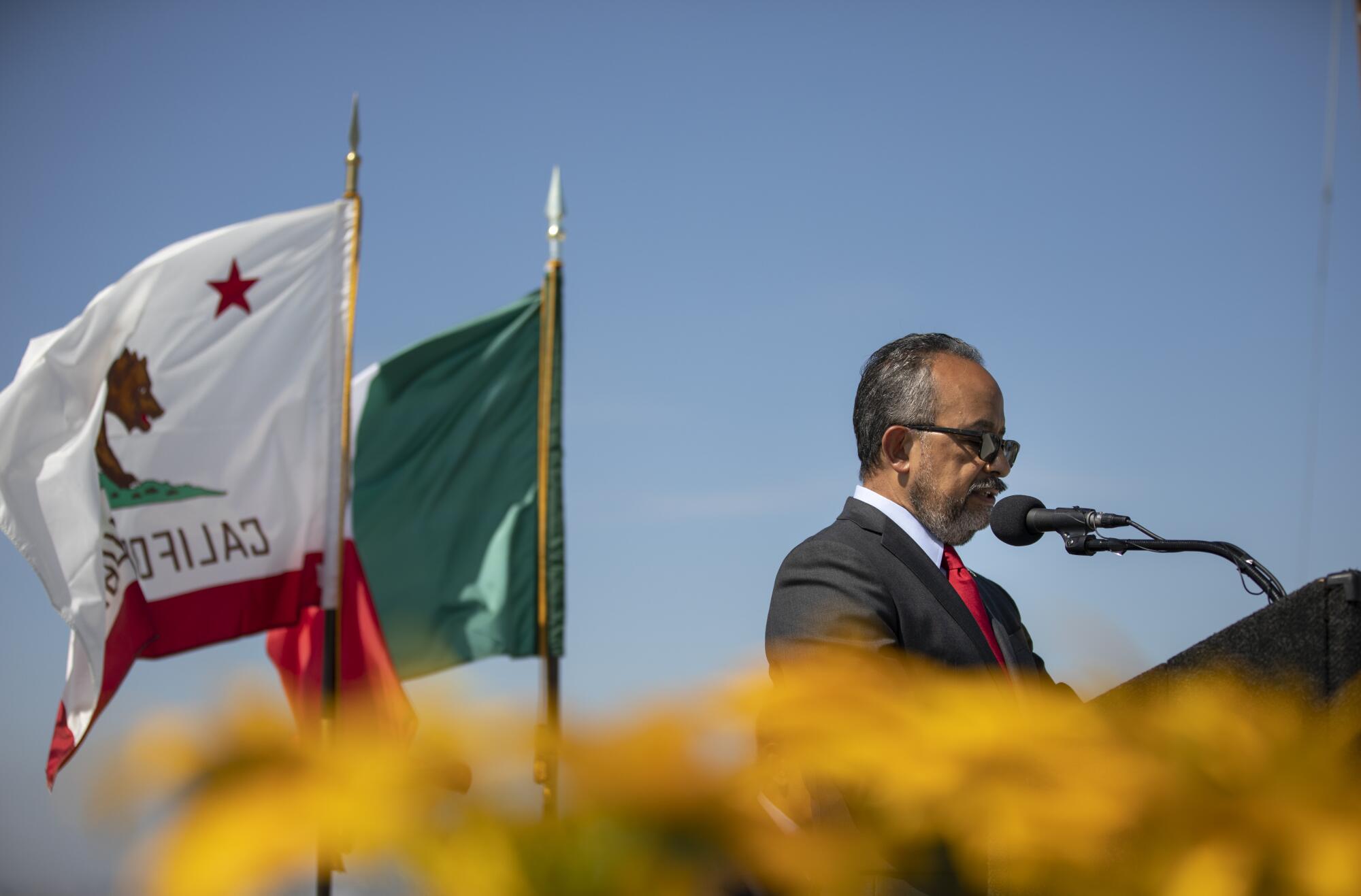
Once the victims’ identities were confirmed, the consulate notified families. González said consulate officials, in coordination with Mexico’s federal government and the government in Puebla, will work with the families through all of the next steps, which include obtaining death certificates in the U.S. and Mexico, and a special visa to move human remains south of the border.
The work has been exhausting for consulate staff, González said.
“No matter how long you’ve been doing it, no matter how professional or committed you are, the people who are in charge of notifying [families], it’s something that is very difficult, you never get used to it,” he said.
While his staff was working on the eight victims from Black’s Beach, another Mexican died at the border, González said.
“I am very concerned that we end up normalizing this type of event,” González said. “We as a society end up normalizing this, looking at them as numbers and statistics. It’s unacceptable.”
Warnings of danger
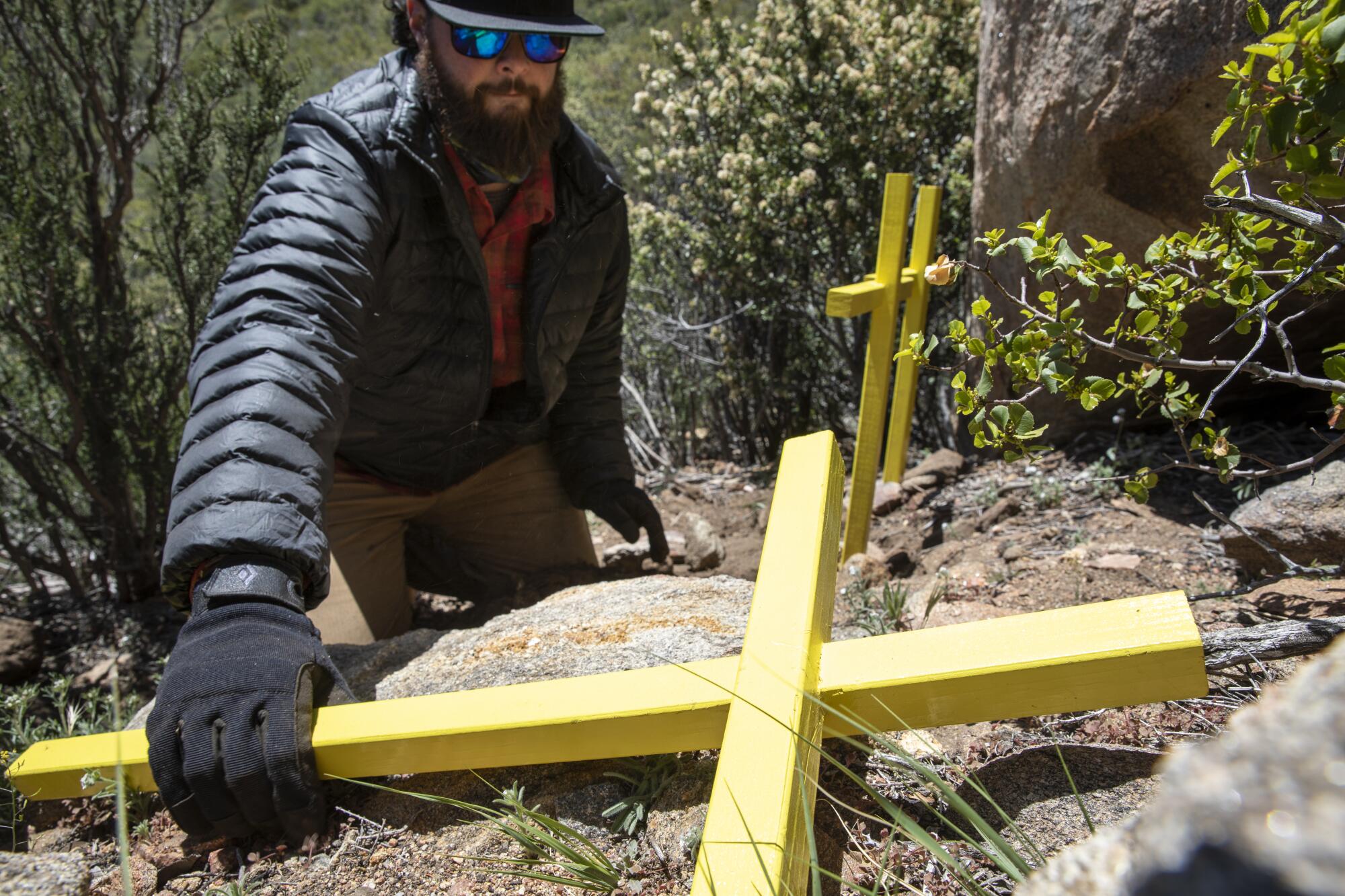
Aguilas del Desierto knows that migrants will continue to try to cross the border despite warnings of danger. Still, the group tries to be proactive, distributing fliers and posters at migrant shelters across Mexico and Central America.
“It tells them about the dangers of crossing the desert, telling people they might die,” Rodriguez said. “It also tells them, you can call 911, or you can call us.”
The poster also provides some practical advice, like how to find precise location coordinates on a cellphone in case a rescue is required.
Last year, Aguilas del Desierto found the remains of 23 migrants who died and facilitated the rescue of 215 people in California and Arizona, Rodriguez said.
“I am convinced that higher walls don’t stop undocumented flows, but deviates them,” González, the consul general, said, adding that “we must never end up seeing these deaths as the unavoidable collateral damage of border policies.”
On Friday, on the heels of another storm system expected to arrive Monday, the Border Patrol in San Diego released a statement warning of dangerous weather conditions, including rain and cold temperatures, that could put migrants’ lives at increased risk.
More to Read
Sign up for Essential California
The most important California stories and recommendations in your inbox every morning.
You may occasionally receive promotional content from the Los Angeles Times.

